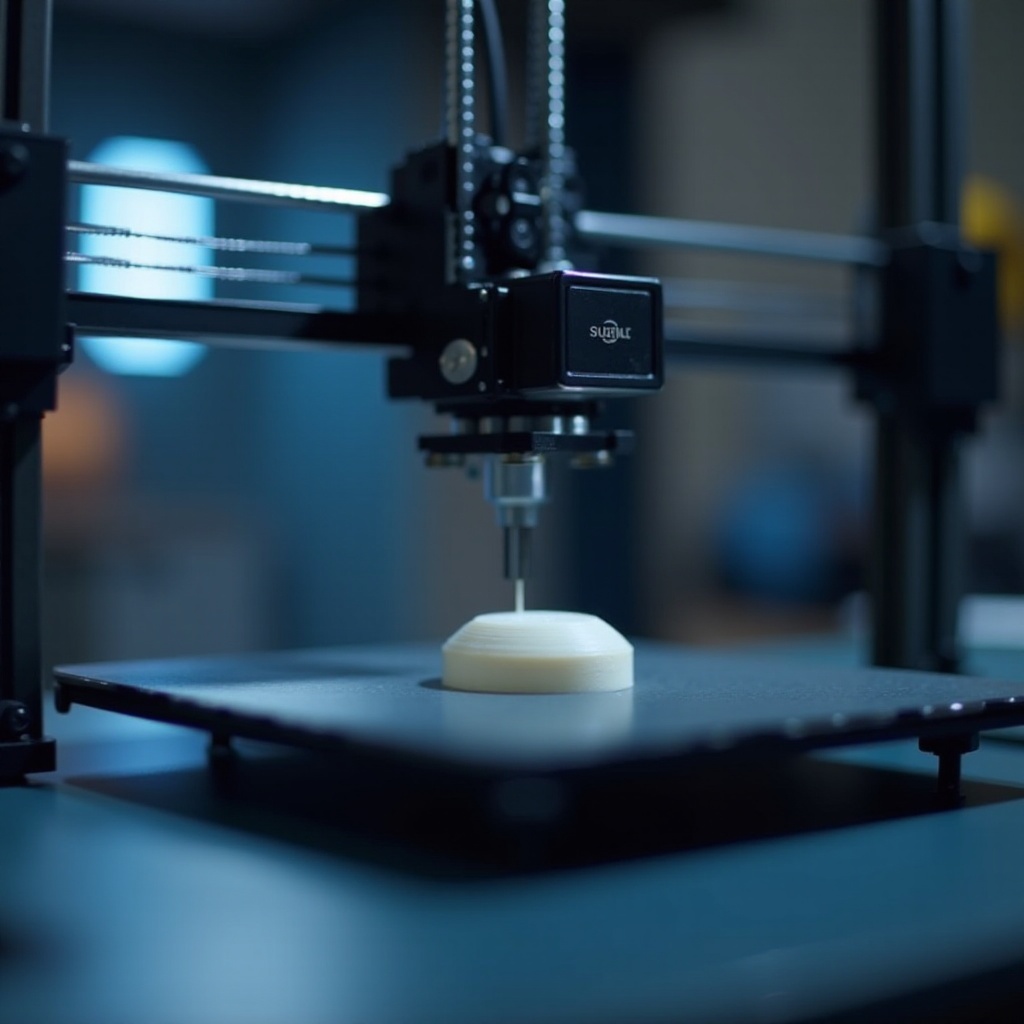Introduction
If you’re in the market for a new FDM (Fused Deposition Modeling) printer, you’ve probably noticed that there are countless options available. Whether you’re an experienced maker or just getting started with 3D printing, selecting the right printer can be overwhelming. The aim of this guide is to simplify that process. We’ll walk you through the key factors to consider when choosing an FDM printer and highlight some of the best models available in 2024.

Top Factors to Consider When Choosing an FDM Printer
Choosing the right FDM printer involves weighing various important factors. Here are the most crucial considerations:
Build Volume
Build volume refers to the maximum size of the object that a 3D printer can produce. Printers with larger build volumes allow for bigger projects or the batch printing of smaller items.
Print Speed
Print speed affects how fast a printer can create an object. Faster print speeds can be advantageous for productivity, but they can sometimes come at the expense of print quality.
Layer Resolution
Layer resolution is measured in microns, and it dictates how smooth and detailed the finished print will be. A lower micron count means higher resolution and finer detail.
Material Compatibility
Not all printers can handle the same materials. Ensure the printer you choose supports the types of materials you plan to use, such as PLA, ABS, or PETG.
User-Friendliness
A user-friendly printer can make the difference between a pleasant printing experience and a frustrating one. Features like an intuitive interface, easy setup, and reliable customer support can be very beneficial.
Price
Prices for FDM printers can range from a few hundred to several thousand dollars. Balance your budget with the features you require to find a model that delivers the best value for your needs.

The Best FDM Printers of 2024
Here’s a look at the top FDM printers you can buy in 2024. These models stand out for their reliability, features, and performance.
Prusa i3 MK3S+
The Prusa i3 MK3S+ is celebrated for its robust build quality and versatile features. It offers a large build volume and supports multiple materials, making it suitable for both beginners and experts.
Creality Ender 3 V2
The Creality Ender 3 V2 is known for its budget-friendly price and reliable performance. With a good build volume and ease of use, it’s perfect for hobbyists and new users.
Anycubic Vyper
The Anycubic Vyper blends high-speed printing and quality output. Its automatic bed leveling and user-friendly interface make it an excellent choice for users looking for convenience.
Artillery Sidewinder X1
Artillery Sidewinder X1 boasts a large build volume and fast print speeds. It’s a favorite among those who need to print large objects without compromising on quality or time.
FlashForge Adventurer 3
For those looking for a compact and affordable option, the FlashForge Adventurer 3 fits the bill. It’s user-friendly, with a streamlined design suitable for educational settings or small projects.
Qidi Tech X-Plus
Qidi Tech X-Plus excels in material compatibility, supporting both traditional and more advanced materials. This flexibility, combined with reliable performance, makes it a valuable asset for serious makers.
LulzBot Mini 2
The LulzBot Mini 2 is known for its robust performance and open-source heritage. It provides good print quality and is backed by strong user community support.
Monoprice Select Mini V2
Affordable and compact, the Monoprice Select Mini V2 stands out for its value and versatility. It’s a great machine for beginners and anyone with limited space.
MakerBot Replicator+
The MakerBot Replicator+ offers professional-level reliability and features, including Wi-Fi connectivity and a large build volume. Ideal for both designers and educators.
Dremel DigiLab 3D45
Dremel DigiLab 3D45 is designed with professionals in mind, offering strong material compatibility, excellent print quality, and a user-friendly experience.
Maintaining your FDM printer is crucial for ensuring consistent, high-quality prints and extending the printer’s lifespan.
How to Maintain Your FDM Printer
Proper maintenance can extend the life of your FDM printer and ensure consistent quality prints. Here’s how to get started:
Basic Maintenance Tips
- Keep it Clean: Regularly clean the print bed, nozzle, and all moving parts to prevent dust and debris from affecting the prints.
- Check for Wear and Tear: Inspect belts, screws, and other components for signs of wear and tighten or replace as needed.
- Lubricate Moving Parts: Ensure that the rods and bearings are well-lubricated for smooth operation.
- Calibrate Regularly: Regular calibration of your printer’s bed and nozzle will prevent printing errors.
Common Troubleshooting Steps
- Identify Print Issues: If prints are coming out poorly, examine the printer for common issues such as clogged nozzles or misaligned belts.
- Check the Software: Ensure your slicing software settings match your specific printer model.
- Adjust the Print Bed: A misaligned bed can lead to print issues; recheck and adjust as needed.
- Replace Consumables: Sometimes, issues can be resolved by simply replacing a worn-out filament or nozzle.

Conclusion
Selecting the best FDM printer can be a daunting task given the numerous options available. By understanding the important factors and knowing which models stand out, you can make an informed decision. Remember to also maintain your printer to keep it in top condition, ensuring excellent prints for years to come.
Frequently Asked Questions
What is the best FDM printer for beginners?
The Creality Ender 3 V2 is highly recommended for beginners due to its affordability, ease of use, and reliable performance.
How often should I maintain my FDM printer?
It’s advisable to perform basic maintenance tasks such as cleaning and inspecting your printer every few prints or at least once a month.
Can FDM printers use different materials for printing?
Yes, many FDM printers support a variety of materials such as PLA, ABS, PETG, and more, depending on their specific capabilities.
